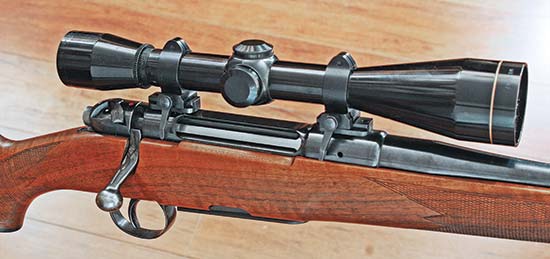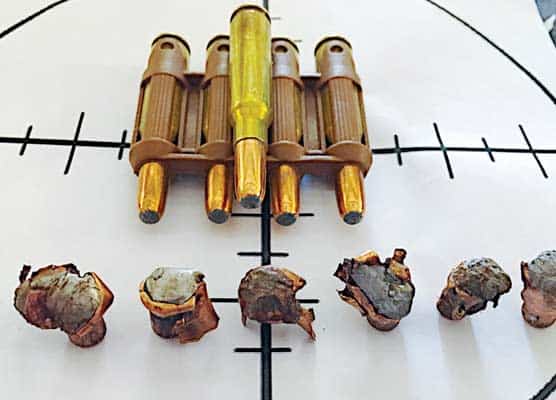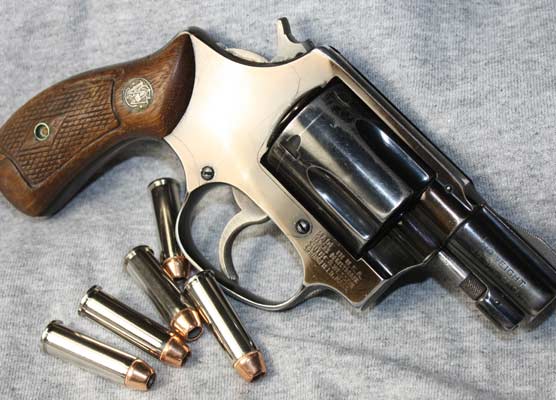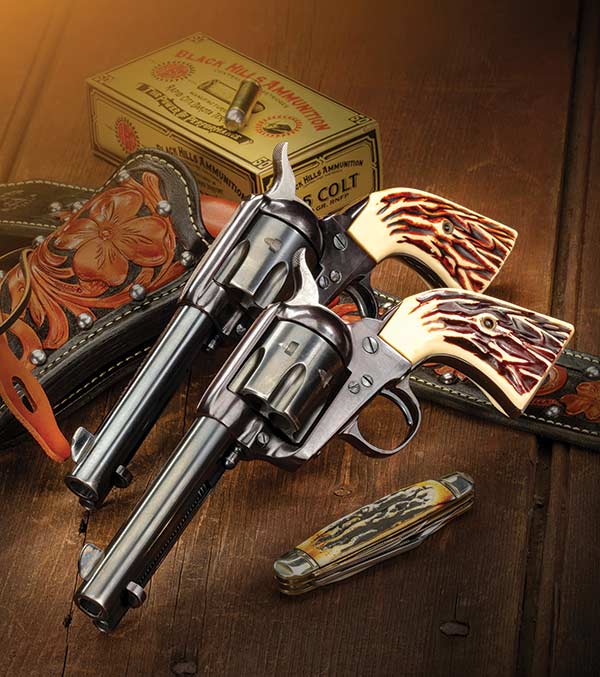Glass Plus Iron
Scopes And Iron Sights: Worth The Hassle?
While most bolt-action rifles don’t even come with iron sights anymore, some hunters still like to combine a quick-detachable scope with irons. Before discussing this belt-and-suspenders arrangement, we should ask why.
Early hunting scopes usually came in detachable mounts because they often went bonkers, often by fogging inside, since unlike modern scopes they weren’t sealed against atmospheric moisture. The hunter could then pull off the scope and switch to irons. Or — if the scope was mounted high enough — even drop his aiming eye to the irons. But today’s scopes, even Chinese cheapies, are far more reliable.
The second justification for “back-up” irons arises when hunting thick cover, especially for potentially dangerous animals such as grizzly or Cape buffalo. Here irons can be theoretically superior to scopes because of their unlimited field-of-view, but a hunter has to be pretty damn close to an animal to “over-fill” the field of view in a modern scope. I know this due to shooting a number of animals from 10 to 25 yards with scopes from 3X to 6X.
When set on 3X, a typical 3-9X variable has an FOV at 100 yards of over 30 feet. This means an FOV at 10 yards of over three feet, is plenty for picking out the correct end of a deer or elk, or the exact place to shoot the front end of a charging grizzly or buffalo.
In reality, irons are slower for somebody who doesn’t use ’em much. Numerous tests with experienced rifle shooters have proven this over and over again, because scope reticles are instantly and easily placed on the right spot, and two separate iron sights (front and rear) are not.
In fact, the only time irons even match a scope’s speed is with the stock fitting like a good shotgun’s — so the aiming eye functions as the rear sight: We just place the front sight where the bullet should land and pull the trigger. I set up the stock of my CZ .416 Rigby this way by rasping down the high “Bavarian” comb until the sights lined up automatically. With this setup I can consistently hit softball-sized rocks at 50 yards by aiming only with the front bead. But it still isn’t faster than a scope.
Setting Them Up
Good iron sights, however, do tend to be tougher than scopes since they don’t contain glass or numerous small internal parts. When you’re way out in the wilderness, days from any gunsmith — or even hours from your spare scope back in camp — then back-up irons make some sense.
But they work best if they’re as close as possible to the same height as the scope, allowing a decent cheek-weld. One of the older rifles in my collection’s a perfect example. It’s a custom 1903 Springfield built by Frank Pachmayr in the 1930s. The scope’s a 2.5X Lyman Alaskan in a Griffin & Howe detachable side-mount, set very low over the action, slightly higher than the Lyman receiver sight. In fact, the Alaskan almost touches the bridge of the action, so the slide of the receiver sight can’t be inserted unless the scope’s detached.
This sort of arrangement was common before World War II and the reason many hunters still think their scope should be mounted as low as possible. Back then, hunting rifles came from the factory with a sloping buttstock designed for iron sights. In order to aim reasonably quickly with the skinny scopes of the day, they needed to be as low as possible.
Today, however, most rifles have higher buttstocks, so instead of mounting the scope lower, the back-up irons need to be higher. This is exactly how I set up another of my BIG game rifles, a Mark X Mauser in .375 H&H. I had Utah gunsmith D’Arcy Echols fit a set of New England Custom Gun express sights considerably higher than the open sights of pre-war Model 70 Winchester, then stocked the rifle myself with a Boyds Classic featuring a high, straight comb. As a result, the sights are only about 1/16″ lower than the center of the Duplex reticle of the rifle’s 3×20 Leupold Big Bore scope. (Echols also installed the rear sight far enough forward to not interfere with the scope’s front end — or appear too fuzzy to middle-aged eyes.)
Detachable Mounts
You don’t need to spend a fortune to buy reliable detachable mounts. The 3X on my .375 is mounted in $30 Weaver rings, which detach and reattach very consistently if you re-tighten their side-screws a little at a time while alternating, instead of tightening each screw all at once. In fact, I’ve used several brands of detachables that tighten in the same basic way, including models from Alaska Arms, Leupold, Warne, Talley and the factory rings on Ruger 77s. They all replace most consistently with gradual tightening.
Many back-up irons require replacing the slide in a receiver sight — or even an entire aperture sight — after removing the scope. I’m not crazy about this because it not only means carrying extra parts in the field, but often the tools to tighten ’em. Out in what’s loosely known as “The Woods,” it’s easiest to just remove the scope and use open sights. But a lot of hunters prefer cool gadgets, the reason German rifles often have intricate mounts, even when their owners (like many American hunters) never use the back-up irons.







